The Infernot: wine places in the Sea of Monferrato
The Infernot: small Monferrato wonders hidden underground; But what are they and especially how to visit them today?
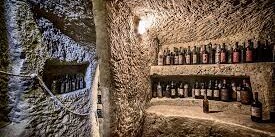
Descending into the depths of the Monferrato, underground, where air and light do not easily penetrate, beneath the dwellings of the farmers and cellarers, are secret little gems; are the Infernot; At first sight, this word seems to have a very clear reference to Hell; who is also underground; in fact, the origin of the term would seem to derive from ‘enfernet“an old French term for prison cells;
I mean, however you look at itthe name doesn’t really do justice to these places: yes underground, yes usually small and isolated, but wonderful signs of a peasant era, where practical sense and intuition came before study.
The infernot of the Monferrato are gems with a unique flavour, well preserved in the belly of this incredible UNESCO territory;
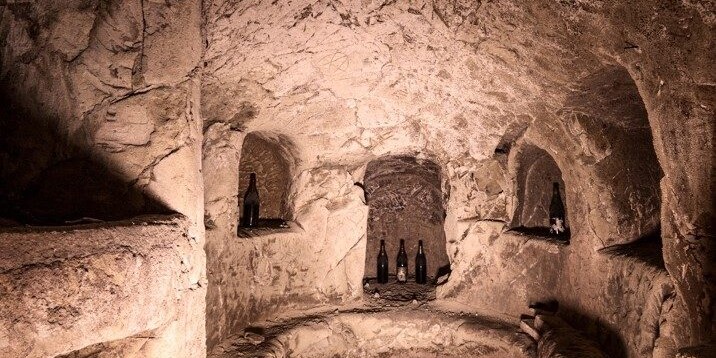
What are Infernot?
To immerse ourselves in the world of the Infernot del Monferrato, let us start with a definition; Infernot are small underground chambers without light or ventilation, used to store bottled wine; The most extraordinary and suggestive component, however, lies in their material of construction; the Cantoni Stonea unique quality of building stone found only in Monferrato; What distinguishes a wine cellar from a true Infernot, in fact, is that the latter is entirely excavated in Monferrina sandstone.
To understand the origins of the Infernot del Monferrato we must make a little effort of imagination and think of ourselves, for a moment, as farmers in the 19th century: these were the years when the idea of bottling Barbera and the other wines so typical of this generous but in some ways difficult land began to become conceivable; Tending the vineyard is hard work that knows no breaks during the year: the soil is tiring, the rain is heavy and on winter mornings the fog envelops everything and the blades of grass are stiff with frost. The grape harvest and cellar work are only the culmination of total dedication to the grapes and their needs; Soon the farmers realised that the wines, made even more precious by their labour, would risk not surviving the warmer months.
Guided by this intuition, they began to excavate small rooms, even more protected than the already existing cellars, in the sandstone on which the houses were built: thus the Infernot were born, places to preserve, protected by the Cantoni Stone, the best wines.
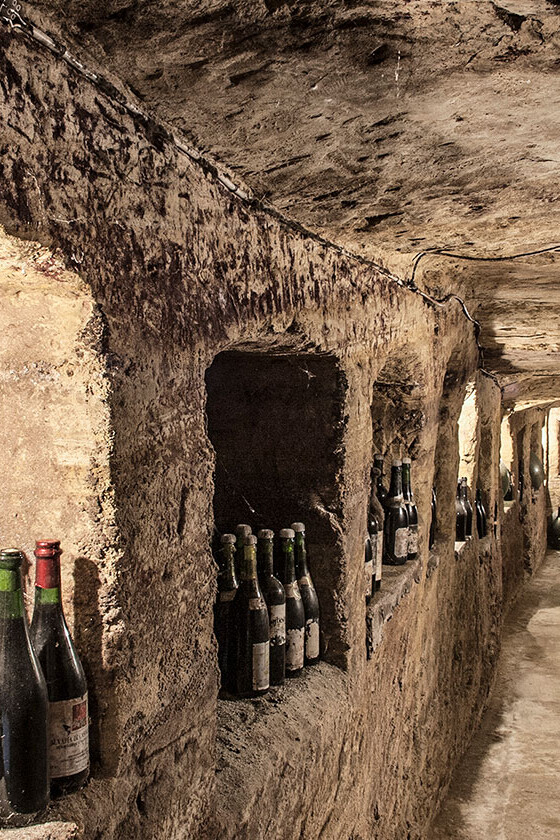
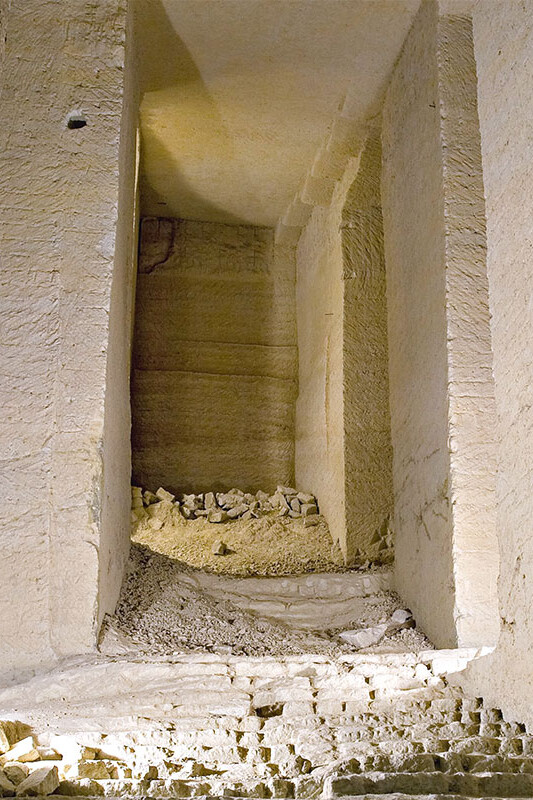
These farmers and quarrymen, who knew little about geological eras, but knew perfectly well the cycles of the seasons and the properties of all things in life, had in fact guessed and understood the geological cycles and the properties of all things in life; the potential of this strange but beautiful stone, essentially linked to its status as a natural insulator: Pietra da Cantoni, in fact, manages to insulate rooms very well against heat and cold, constituting an excellent barrier against heat and cold; exceptional protection from temperature fluctuations. The fact that the Infernot were shielded from the light and had no ventilation points, with the exception of the entrance, made them truly cosy little wombs, warm in winter and cool in summer, in which to take refuge to find a glimmer of comfort in the harsh peasant way; A sort of small private winery!
Infernots can be of various types: single-room, multi-room or corridor. Moreover, each quarryman imprinted the mark of his style and care in his work: some show smoothed finishes, others still show the picconic views, still others are simply natural split. You can find niches carved into the stone or tiers to house the bottles: some have even created a continuous tier system in their Infernot. Decorations and other elements are then the mark of each person’s flair. There is astrict specifications that stipulate what can be Infernot and what cannot and also classify Infernot according to three criteria: type of construction, bottle storage solution and finish. The full specification can be found here.

La Pietra da Cantoni
As mentioned above, the history of the Infernot is inextricably linked with that of the Cantonian stone, a sandstone formed from calcareous and marly marine layers with incredible thermal insulating capacity. Let’s go back the years again: let’s go back to when man did not exist and the ground was walked by animals as tall as buildings. At that time, the Monferrato was a sea, deep and teeming with life. In its depths of more than 200 metres, gigantic marine reptiles, unimaginable creatures and tiny molluscs were born, fought each other for existence and finally, dying, were deposited on the seabed, forever guarded by the sands and other sediments that slowly overlapped in the cradle of the sea; In the meantime, life on the planet continued to move forward: around 3.5 million years ago, hills began to emerge from the sea and the Monferrato finally emerged; What remains of that sea, its seabed, a mosaic of clays, calcareous algae, small animals, gigantic sharks, fossilised leaves, is today the Pietra da Cantoni and bears witness to the inventiveness and skill of ordinary people, who managed to create small masterpieces out of practical needs;
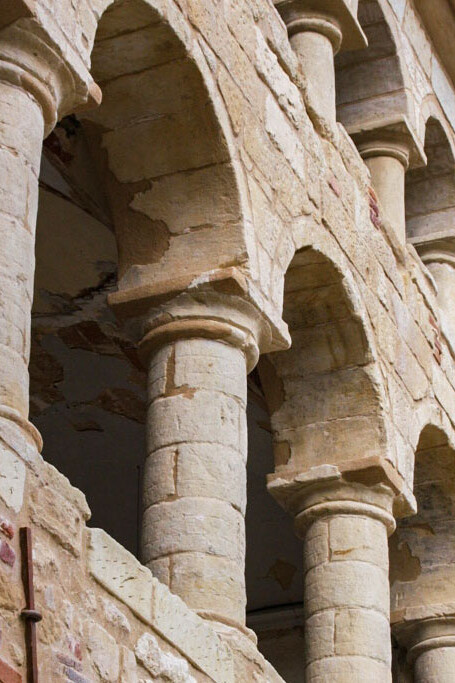
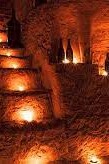
Visiting the Infernot
After our time travels, let us return to the present: The Infernot, recognised as a UNESCO World Heritage Site, are part of a circuit of fourteen Monferrato municipalities, between the provinces of Asti and Alessandria.; Joining all the municipalities is that of Cella Monte Monferrato, which hosts the Widespread Ecomuseum of the Pietra da Cantoni and one of the most characteristic infernots in the area. Now, the Infernot are almost all built in private houses, so they cannot always be visited: some of them can only be visited on Fridays and Sundays by appointment, others only open their doors to visitors on particular occasions of the year; On the Ecomuseum website there are all useful references for organising one’s visit to the Infernot of the circuit, municipality by municipality. And while we’re at it, why not take a stroll through the Monferrato villages and perhaps enjoy a nice glass of Barbera?